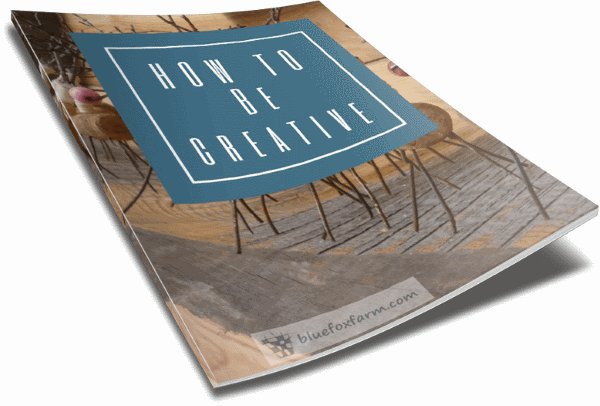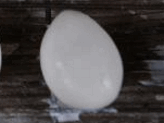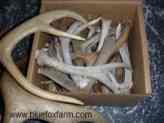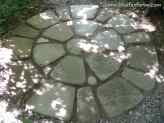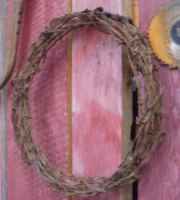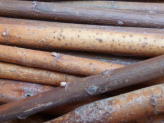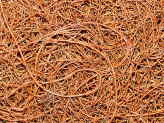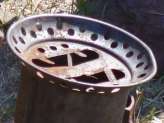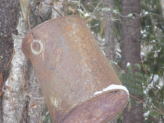Twig Palisade Fence
A Rustic take on a Traditional Design
A twig palisade fence is made by attaching vertical twigs to two wires strung parallel to the ground between fence posts or trees. They are often made by attaching upright branches or twigs to horizontal wooden stringers too.
Each long twig will be attached with tie wire, making an almost completely private fence between properties, or for animal control.
Larger animals like dogs or deer won’t go through or over a palisade style fence if it’s higher than 2 meters (6-7'), especially with closely spaced uprights that they can't see through.
You can alternate longer and shorter twigs to give a pattern if you prefer; if you get really inspired, how about a scallop?
This takes some planning, but with some ingenious pre-cutting of the different heights will be an eye catching enclosure to your garden.
String recycled wire between two posts or even trees. See the page on wire techniques for crafts for an easy way to untwist wire.
Special care has to be taken with the trees used this way, as a tight wire girdling it will kill it within a couple of seasons.
I thread the wire through some lengths of old garden hose (I told you I never throw anything away, didn’t I?) then the garden hose goes around the tree.
If necessary, you can staple the garden hose with the wire in it to the tree, as a small wound like that won’t kill a tree the same way girdling it will.
I’ve also attached a piece of lumber to the tree to give some protection to the tree bark. You can pull the wire quite tight if you use these methods to protect the tree.
Otherwise use a metal post - I recycle old metal bed frames for this, or use any long metal pipe. If you have shorter pieces of metal pipe, pound these in, then use them to insert a taller wooden piece, even a branch if you want a very rustic look.
All these methods depend on your soil and how easy it is to pound the metal into, how wet it is – very wet soil makes it harder to keep the posts upright, and how rocky.
If you have extremely rocky soil, you may have to excavate where you want the post, then use concrete to hold it in place.
Once the wires are strung in place, depending on how long (or how high) your palisades will be, you can start the fun part of attaching the twigs.
Start close to a post or tree and attach the tie wire that you will use to the horizontal wire.
You can use a piece of tie wire about 4 meters long, any longer than that will just get wrapped around everything and be a nuisance.
You can add more as you go, so only use a piece that’s convenient.
Place your first palisade in place, and determine the distance between them.
You’ll need less quantity of twigs if they’re further apart, but they will need to be a little sturdier to prevent animals from pushing between them.
This type of fence has been used in Mexico to make animal proof fences for livestock, using mesquite poles for the uprights, and barbed wire for the support wire.
You'll see this method of fencing used to prevent snow from drifting, or sand at beaches from shifting and smothering walkways and accesses.
Wind the tie wire around the palisade, then around the horizontal wire a few times until you get the correct spacing for the next palisade.
Rinse and repeat, all the way along. Sometimes it’s easier to do a few on the top wire, then go to the bottom wire and install those.
The nice part about this type of fence is that you can leave it partly finished and come back to it if you run out of twigs, simply wrap the wire loosely in place and then you can unwind it when you want to do some more.
Learn what it takes to be creative - we all have the gene but how do we develop it? Get the free guide!
Fill in the form below for your copy;
(Don't be disappointed - use an email address that will accept the free download - some .aol email addresses won't.
If you don't see your download within a few minutes, try again with another email address - sorry for the bother.)




